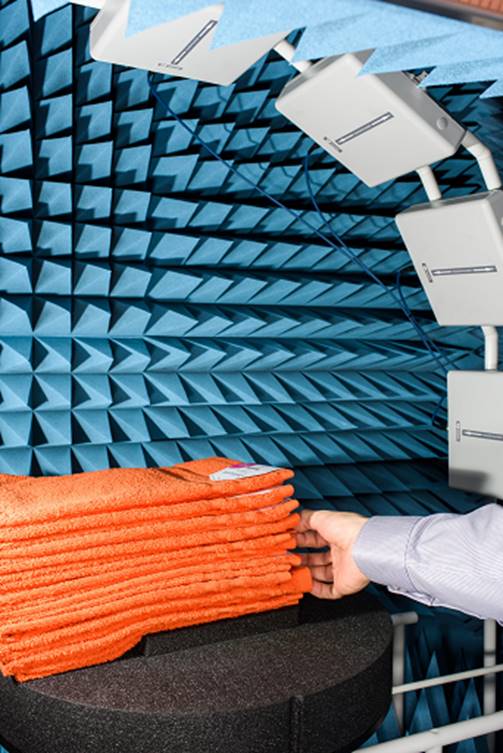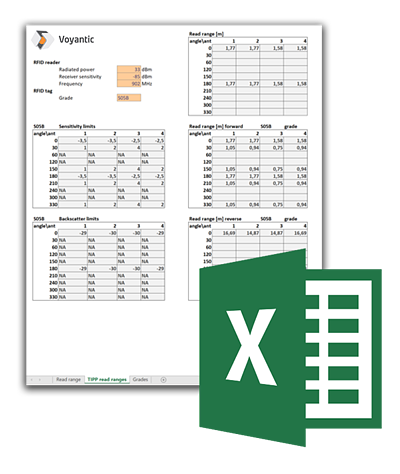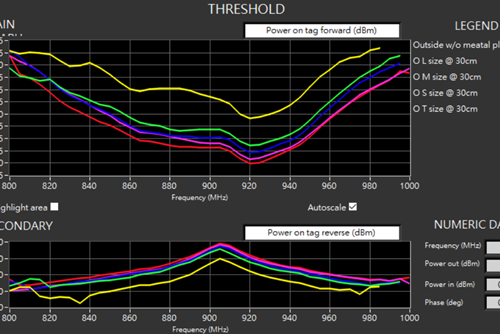Retail and the retail supply chain are among the most significant users of UHF RFID technology. However, retail RFID projects are not the most simple ones. Items in retail come in all shapes, sizes, and materials. They are shipped in different boxes and stored and displayed on all kinds of racks, shelves, and tables. Also, different readers are used in various applications: logistics tracking, inventory count, RFID EAS, POS, and so on. I was involved in several retail RFID projects, and I have seen how complicated the performance optimization can be.
GS1 Tagged-Item Performance Protocol (TIPP) was developed to help retail RFID by making buying and selling tags easier. But what do the TIPP guidelines mean, and what kind of testing is required?
Goal: Accuracy in Inventory Counting
The purchase of RFID tags for retail items used to be complicated. The goal is simple: to have good counting accuracy (read rate) and a long and controlled read range. But I have seen how simple read range and counting accuracy requirements turn into a complicated mess of lengthy and costly field testing and piloting. Tags and readers are often selected separately, and system-level optimization is left to a trial-and-error process, if not entirely forgotten.
One approach used to be describing various use cases in detail and relying on the suppliers and technology providers to deliver tags that would work in all of the applications. The supplier was accountable for performance but had in practice minimal possibilities to achieve the goal.
Another strategy was to test extensively and to list accepted tags for different product categories. That way, the supplier was no longer accountable but was forced to buy specified tags without a possibility for price competition.
Finally, when using TIPP, the supplier is accountable for performance, and also has all the tools needed for delivering and verifying it.
Tagged- Item Grading Makes Retail RFID Projects Easier

The Tagged Item Performance Protocol makes buying and selling tags easier. The idea is familiar with many goods, from engine oils to clothes. It is a lot easier for a buyer to purchase shoes of size 41 than to provide a list of different measures of the foot. And it is a lot easier for the supplier to produce, stock, and sell shoes with a few different sizes than to verify that the unique requirements of each customer are met.
Similarly: it is easier to buy and sell tagged items performing according to a grade S05B than to list and verify all relevant performance requirements individually. As a result, a retailer’s list of requirements could be, for example:
- items to be tagged with UHF RFID tags with C1G2 protocol
- tagged items following GS1 Format & Symbol Placement for the Electronic Product Code guideline with C1G2 protocol
- performance according to GS1 TIPP S05B grade
- coded with SGTIN-96.
Now there is no longer a need to describe in detail which RFID tags to use and how to place them. Also, the suppliers and tag providers don’t need to guess what the use case description means from an RF performance point of view. TIPP translates complex system-level requirements into simplified component level pass/fail verification that any vendor can handle themselves.
The Voyantic Tagged-Item Grading System is 100% aligned with the GS1 Tagged-Item Performance Protocol (TIPP). The system automates TIPP grade validation and testing and provides results quickly and easily. It also enables TIPP grade audits to be performed by anyone. The Voyantic Tagged-Item Grading System is available as a complete turn-key setup.
Want to learn more? Read more about the Voyantic Tagged-Item Grading System! Don’t forget to download our handy tool for evaluating read ranges with different RFID readers and tags with various TIPP grades below!

Download a Tool for Evaluating Read Ranges
Download a handy tool for evaluating read ranges with different RFID readers and tags with various TIPP grades. In the tool you can select a TIPP grade, input reader parameters, and see what kind of read range is expected from the system.


